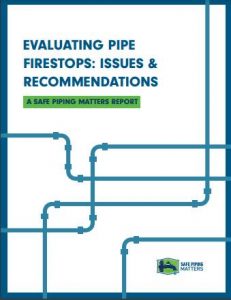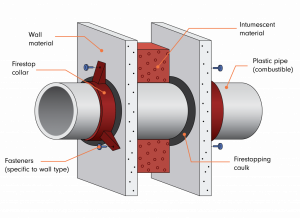
Safe Piping Matters has published a new research-based report on the fire protection of pipe penetrations. It presents expert knowledge on how to help protect the lives of occupants and first responders to building fires.
“There is quite a long list of items that can cause problems with the installation of stop materials,” says one expert. “Any of these elements can contribute to a two-hour wall being reduced to a four-minute wall.”
The report also explains how firewall failures in the event of fire can trigger failures that put people at risk, while raising serious questions and responsibilities for architects, engineers and construction professionals.
Based on guidance from fire protection experts and industry research, Safe Piping Matters reviews several issues that architects, engineers and contractors should consider to reduce fire risk. Covers issues related to fire protection assemblies for various plastic pipe materials, including polyvinyl chloride (PVC), chlorinated polyvinyl chloride (CPVC), polyethylene (PE), and cross-linked polyethylene plastic ( PEX), as well as non-combustible pipe materials. such as copper, iron and steel.
Key topics include:
- How pipe combustibility affects fire protection requirements
- Why complexity is the main challenge of stopping the fire
- Comparisons of typical firewall assemblies
- Common problems to avoid
- Recommendations to improve safety and reduce liability
 Safe Piping Matters works to provide design and construction professionals with the best information on safe, resilient and sustainable piping. The organization believes that the systems should not only improve the performance of the building, but also protect the health of the people who live and work in it.
Safe Piping Matters works to provide design and construction professionals with the best information on safe, resilient and sustainable piping. The organization believes that the systems should not only improve the performance of the building, but also protect the health of the people who live and work in it.
“Designing and installing firestop assemblies for pipe penetrations requires a demanding process,” says Paul Hagar, executive director of Safe Piping Matters. “Crews must understand what code requirements apply to their situation, select the right components, and install them correctly. This report features experts who address the critical firefighting issues that occur in throughout the construction process and provide recommendations to make buildings safer.”
The report can be accessed on the organization’s website.

